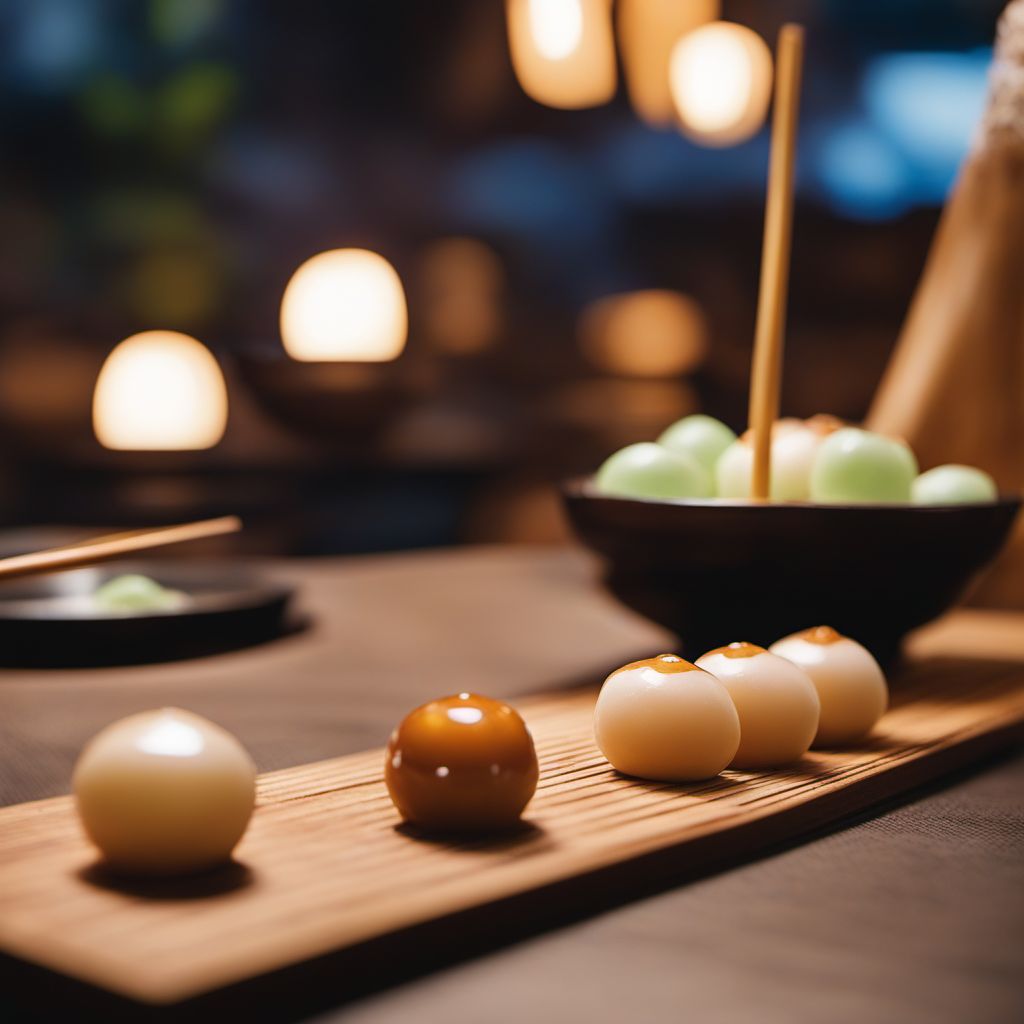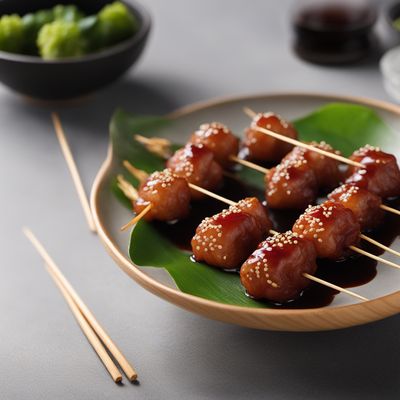
Dish
Mitarashi dango
Mitarashi dango is made by shaping mochi into small balls, and then grilling or boiling them until they are cooked through. The balls are then coated in a sweet soy sauce glaze, which is made from soy sauce, sugar, and other ingredients. Mitarashi dango is a popular dessert in Japan, and is often sold at street vendors and festivals.
Origins and history
Mitarashi dango has its roots in Japanese cuisine, and is believed to have been enjoyed since the Edo period (1603-1868). The dish is now enjoyed throughout Japan and beyond.
Dietary considerations
Gluten-free, dairy-free, nut-free, suitable for vegans
Variations
There are many variations of Mitarashi dango, depending on the region and the cook. Some versions may use different types of glazes, such as a sweet red bean paste or a sesame sauce. Others may use different types of fillings, such as fruit or nuts.
Presentation and garnishing
To make Mitarashi dango, be sure to use high-quality mochi and soy sauce. It is also important to cook the mochi evenly, so that it is not too hard or too soft. When serving, arrange the dango on a skewer or plate, and drizzle with extra glaze. Garnish with sesame seeds or chopped nuts, if desired.
Tips & Tricks
If you don't have access to pre-made mochi, you can make your own by mixing glutinous rice flour with water and microwaving it until it becomes a sticky dough. Be sure to let the dough cool before shaping it into balls. Additionally, if the soy sauce glaze is too thick, you can thin it out with a bit of water or sake.
Side-dishes
Mitarashi dango is often served with a side of green tea or other hot beverage. It can also be paired with a light dessert wine or sake. Some popular side dishes that go well with Mitarashi dango include edamame, miso soup, and pickled vegetables.
Drink pairings
Mitarashi dango is typically paired with green tea or other hot beverages. It can also be paired with a light dessert wine or sake.
Delicious Mitarashi dango recipes
More dishes from this category... Browse all »

Aamras
Indian cuisine

Aasmi
Indian cuisine

Agra petha
Indian cuisine

Aiyùbīng
Taiwanese cuisine

Ajdnek
Slovenian cuisine

Akafuku
Japanese cuisine

Akanés
Greek cuisine

Akumaki
Japanese cuisine




